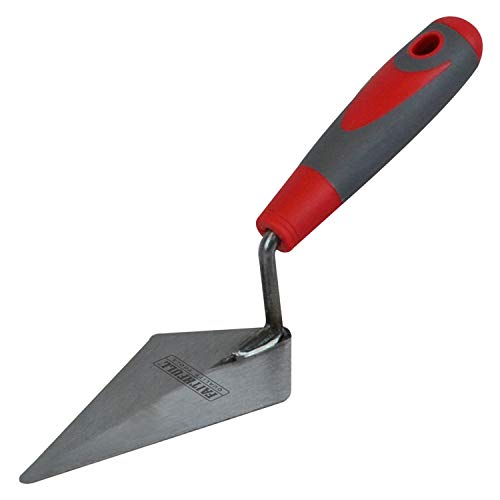What size trowel should I use for bricklaying?
When it comes to bricklaying, the size of the trowel plays a critical role in the quality and efficiency of the job. The right trowel size ensures proper mortar coverage, adhesion, and overall stability of the bricks. In this article, we will discuss the different sizes of trowels and their applications, helping you determine the best trowel size for your bricklaying projects.
What is a trowel?
A trowel is a handheld tool used in bricklaying to spread and shape mortar. It consists of a flat steel blade attached to a handle. The blade’s shape and size determine the amount of mortar that can be spread at one time. Trowels are available in various sizes, with the most common being 10 and 11 inches in length.
Common trowel sizes for bricklaying
1. 10-inch trowel: The 10-inch trowel is the standard size used by many bricklayers. It is versatile and suitable for most bricklaying projects, including small repairs, patchwork, and general brickwork. This size allows for a good mortar coverage while still being manageable and easy to handle.
2. 11-inch trowel: The 11-inch trowel is slightly larger than the 10-inch trowel. It is commonly used by experienced bricklayers and masons who prefer a larger working surface. This size is suitable for larger brick walls and projects that require a faster application of mortar.
3. Other sizes: While the 10-inch and 11-inch trowels are the most common sizes used in bricklaying, other sizes are available for specific applications. For example, a 12-inch trowel may be used for large projects or when working with particularly heavy bricks. Smaller trowels, such as 9-inch or 8-inch trowels, are sometimes used for intricate brickwork that requires more precision.
Choosing the right trowel size
1. Project size and scope: Consider the size and complexity of your bricklaying project. For small repairs or simple brickwork, a 10-inch trowel should be sufficient. If you are working on a larger project, such as building a wall, an 11-inch trowel may save you time and effort.
2. Personal preference: Your level of experience and personal preference also play a role in choosing the right trowel size. If you are new to bricklaying, start with a 10-inch trowel to get comfortable with the tool. As you gain experience and proficiency, you can experiment with different sizes and decide which one suits you best.
3. Overhang: Another factor to consider is the overhang of mortar you desire between the bricks. A larger trowel size will result in a greater mortar overhang, while a smaller trowel size will give you less. The overhang affects the appearance and stability of the brickwork, so choose a trowel size that aligns with your desired outcome.
Tips for using a trowel
Using the right trowel size is important, but proper technique is equally crucial. Here are some tips for using a trowel effectively:
1. Apply even pressure: When spreading mortar with the trowel, apply even pressure to ensure a consistent thickness across the entire surface.
2. Angle the trowel: Hold the trowel at a slight angle to create a smooth, even layer of mortar. A 30-degree angle is commonly recommended.
3. Clean as you go: Keep the trowel clean by wiping off excess mortar regularly. This will prevent the mortar from drying on the blade and affecting future spreads.
4. Practice and experiment: Bricklaying is a skill that improves with practice. Take the time to familiarize yourself with different trowel sizes and find the one that works best for you.
By considering the project size, personal preference, and desired mortar overhang, you can confidently choose the right trowel size for your bricklaying projects. Remember to apply proper technique and practice regularly to enhance your bricklaying skills. Happy bricklaying!






